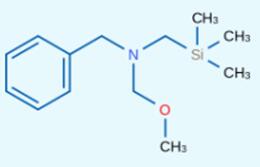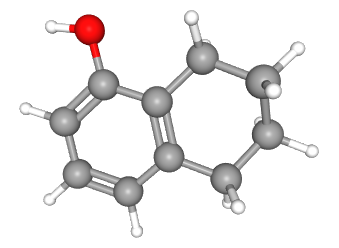Uses of Sulfolane
Dec 31,2019
Sulfolane (1λ6-thiolane-1,1-dione) is an organosulfur compound, formally a cyclic sulfone, with the formula (CH2)4SO2. Sulfolane is a colorless liquid commonly used in the chemical industry as a solvent for extractive distillation and chemical reactions. Sulfolane was originally developed by the Shell Oil Company in the 1960s as a solvent to purify butadiene. Sulfolane is a polar aprotic solvent, and it is readily soluble in water[1,2].
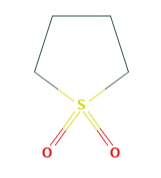
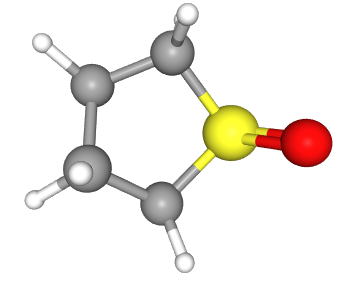
Fig 1. Chemical structure formula and three-dimensional structure of Sulfolane
Uses
Sulfolane is classified as a sulfone, a group of organosulfur compounds containing a sulfonyl functional group. The sulfone group is a sulfur atom doubly bonded to two oxygen atoms and singly bonded to two carbon centers. The sulfur-oxygen double bond is polar, conferring good solubility in water, while the four carbon ring provides non-polar stability. These properties allow it to be miscible in both water and hydrocarbons, resulting in its widespread use as a solvent for purifying hydrocarbon mixtures.
The original method developed by the Shell Oil Company was to first allow butadiene to react with sulfur dioxide via a cheletropic reaction to give sulfolene. This was then hydrogenated using Raney nickel as a catalyst to give sulfolane[3,4].
Sulfolane is widely used as an industrial solvent, especially in the extraction of aromatic hydrocarbons from hydrocarbon mixtures and to purify natural gas.[3] The first large scale commercial use of sulfolane, the sulfinol process, was first implemented by Shell Oil Company in March 1964 at the Person gas plant near Karnes City, Texas. The sulfinol process purifies natural gas by removing H2S, CO2, COS and mercaptans from natural gas with a mixture of alkanolamine and sulfolane.
Shortly after the sulfinol process was implemented, sulfolane was found to be highly effective in separating high purity aromatic compounds from hydrocarbon mixtures using liquid-liquid extraction. This process is widely used in refineries and the petrochemical industry. Because sulfolane is one of the most efficient industrial solvents for purifying aromatics, the process operates at a relatively low solvent-to-feed ratio, making sulfolane relatively cost effective compared to similar-purpose solvents. In addition, Sulfolane is selective in a range that complements distillation; where sulfolane cannot separate two compounds, distillation easily can and vice versa, keeping sulfolane units useful for a wide range of compounds with minimal additional cost.
Whereas sulfolane is highly stable and can therefore be reused many times, it does eventually degrade into acidic byproducts.A number of measures have been developed to remove these byproducts, allowing the sulfolane to be reused and increase the lifetime of a given supply. Some methods that have been developed to regenerate spent sulfolane include vacuum and steam distillation, back extraction, adsorption, and anion-cation exchange resin columns.
Sulfolane is also added to hydrofluoric acid as a vapor suppressant, commonly for use in a refinery's alkylation unit. This "modified" hydrofluoric acid is less prone to vaporization if released in its liquid form[5].
References
1.Young, Eldred E. (Shell International Research) BE Patent 616856, 1962.
2.Goodenbour, John W.; Carlson, George J. (Shell International Research) BE Patent 611850, 1962.
3.Hillis O. Folkins, "Benzene" in Ullmann’s Encyclopedia of Industrial Chemistry, Wiley-VCH, Weinheim, 2005.
4.Earl Clark, Kirk-Othmer Encyclopedia of Chemical Technology, "Sulfolane and Sulfones", John Wiley & Sons, NY, 1997.
Westervelt R. Chevron Phillips Chemical[J]. 2012.
- Related articles
- Sulfolane: Applications in Analytical Chemistry and its Treatment in Groundwater Aug 21, 2024
Sulfolane excels in gas chromatography equipped with flame ionization detection for volatile compounds but challenges groundwater remediation due to high mobility.
- Is sulfolane a green solvent? May 15, 2024
Sulfolane has previously been considered a safer dipolar aprotic solvent, as sulfolane has much lower skin permeability than DMSO, DMF, DMAc, and NMP.
- The Synthesis of Sulfolane Nov 24, 2022
The passage introduces the synthesis of Sulfolane, also mentions the uses of it.
N-Methoxymethyl-N-(trimethylsilylmethyl)benzylamine forms azomethine ylides which readily undergo[3+2] cycloaddition to α,?-unsaturated esters.....
Dec 31,2019Chemical Reagents5,6,7,8-Tetrahydro-1-naphthol is a useful chemical intermediate, widely applied in organic synthesis and also used as a fuel additive.....
Dec 31,2019Organic reagentsSulfolane
126-33-0You may like
- Glycidol: both an epoxide and an alcohol
Mar 17, 2025
- Disposal and Utilization of Polyvinyl chloride
Mar 12, 2025
- Uses of Polypropylene in Our Daily Life
Mar 10, 2025
- Tetramethylene sulfone
-

- $0.00 / 25Kg/Drum
- 2025-03-18
- CAS:126-33-0
- Min. Order: 1Kg/Drum
- Purity: 99%
- Supply Ability: 5000KG
- Sulfolane
-
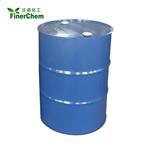
- $5.00 / 200KG
- 2025-03-18
- CAS:126-33-0
- Min. Order: 1KG
- Purity: 99.5%
- Supply Ability: 1000mt/year
- sulfolane
-
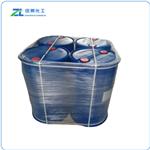
- $10.00 / 1kg
- 2025-03-18
- CAS:126-33-0
- Min. Order: 1kg
- Purity: 99%
- Supply Ability: 5000




